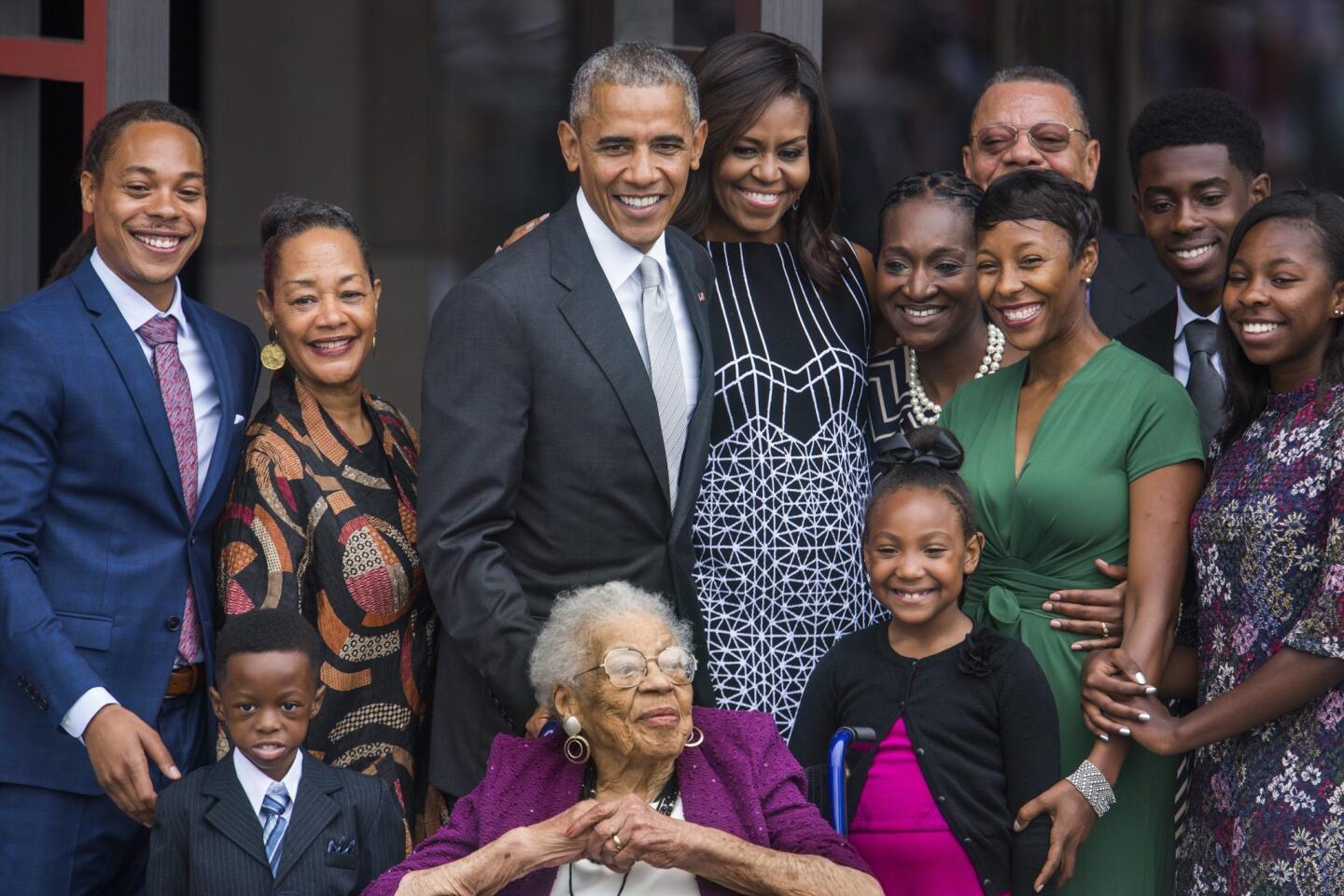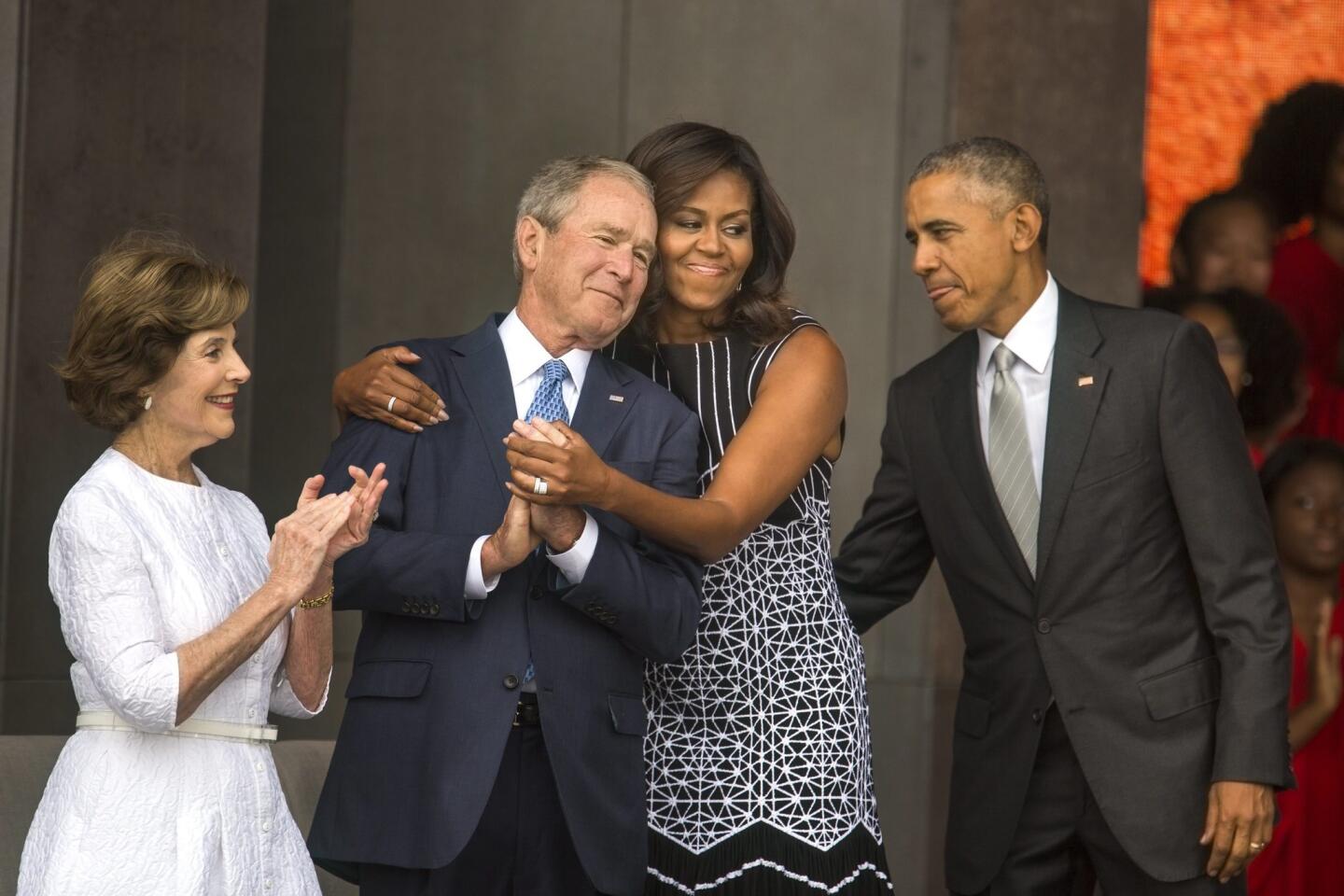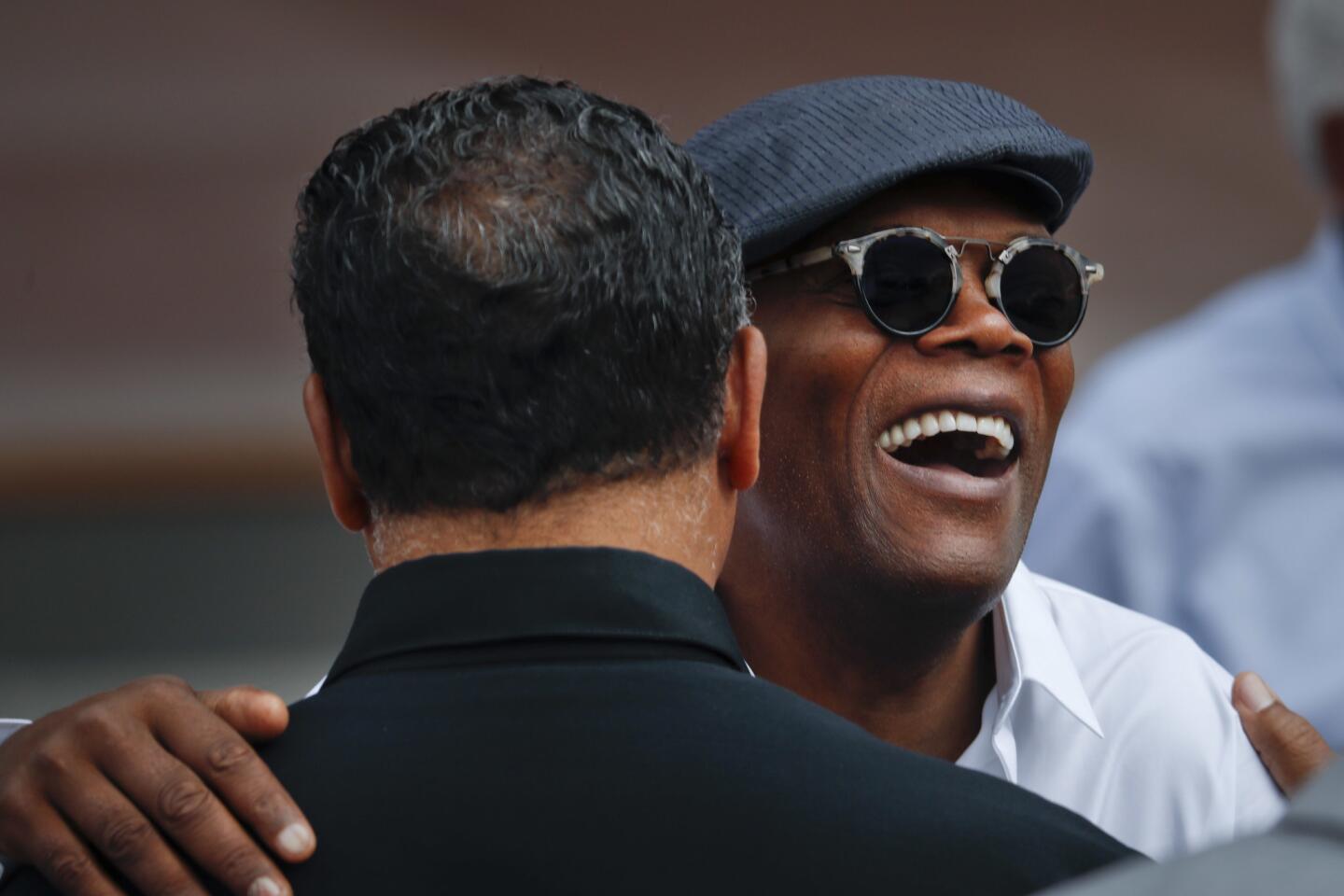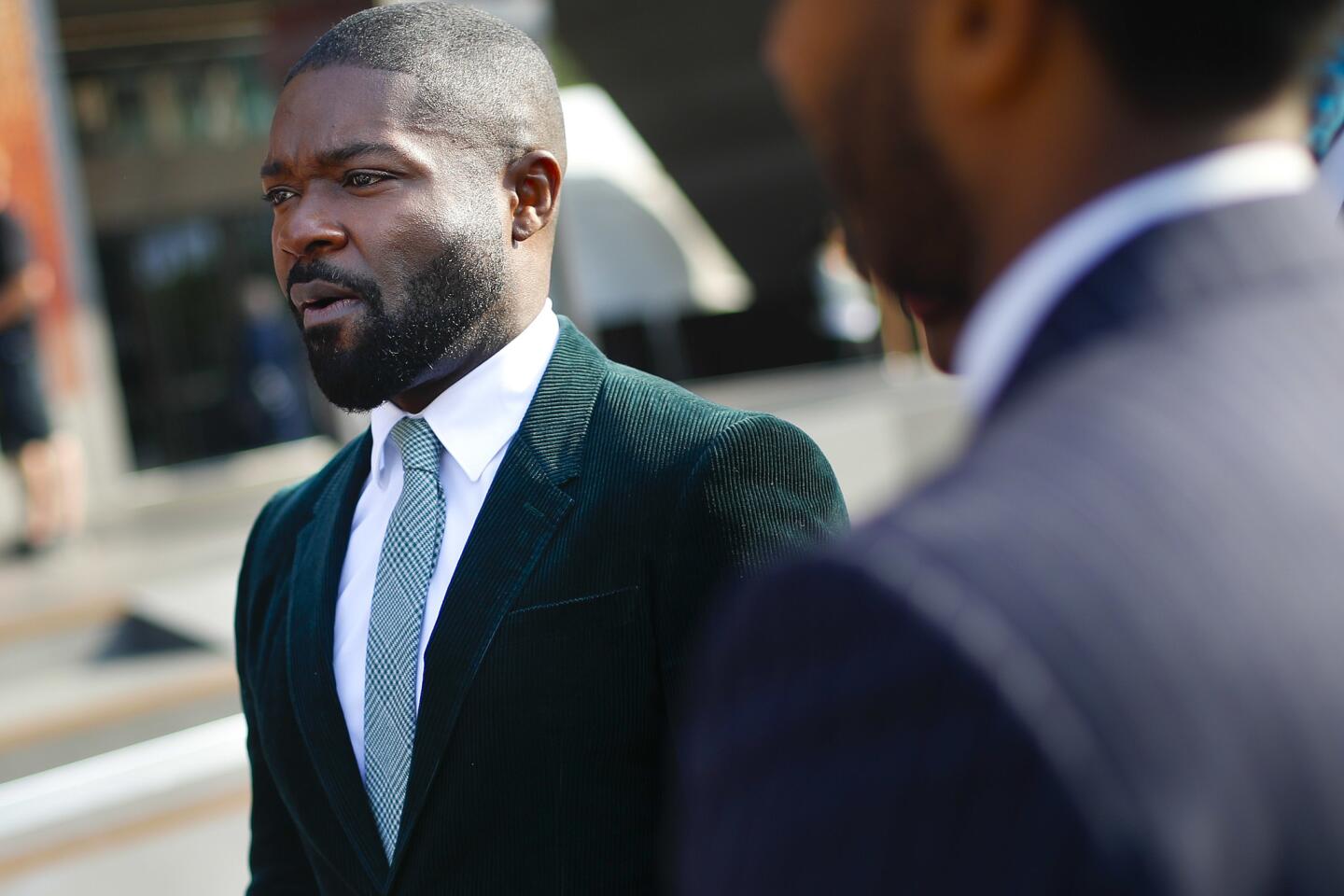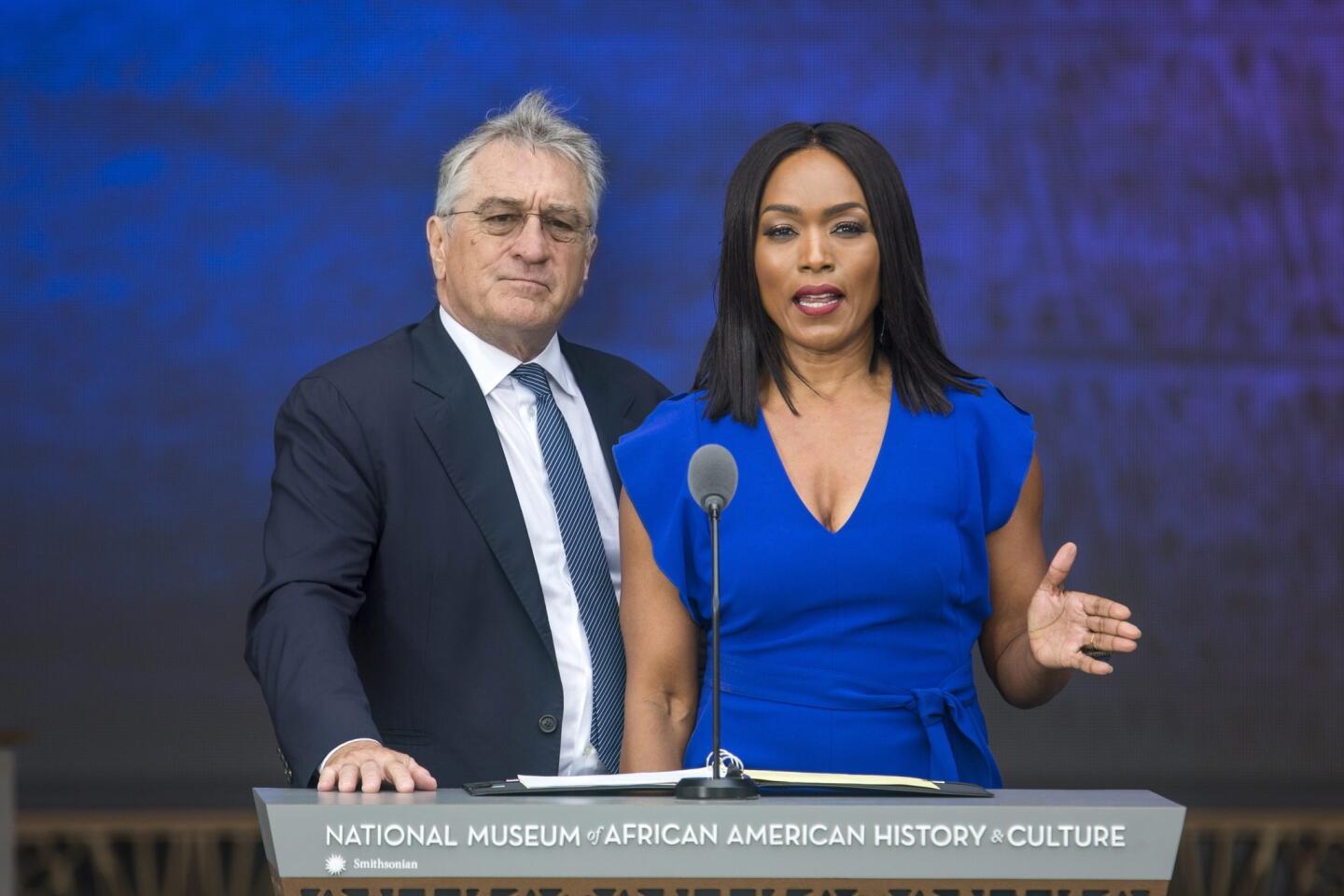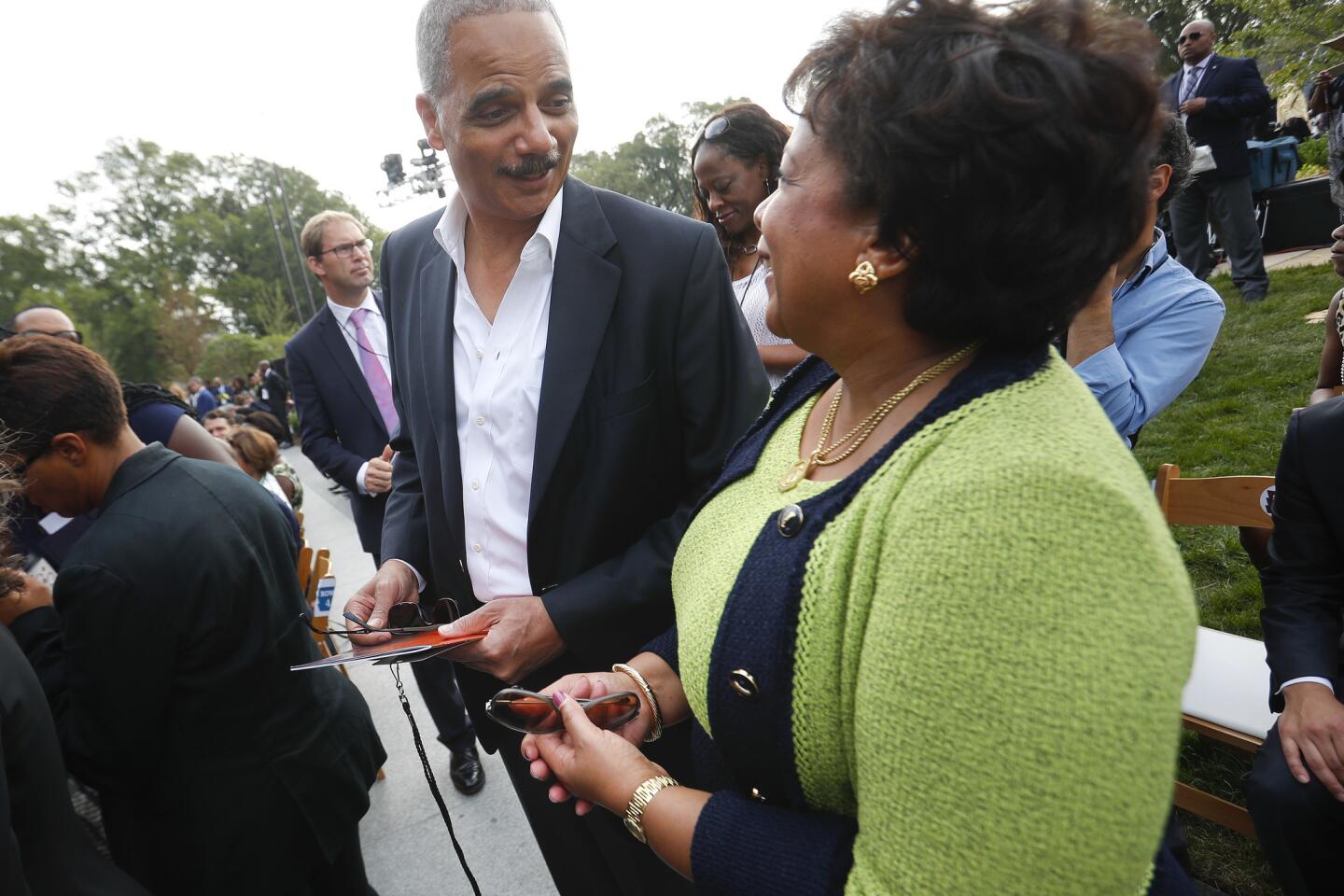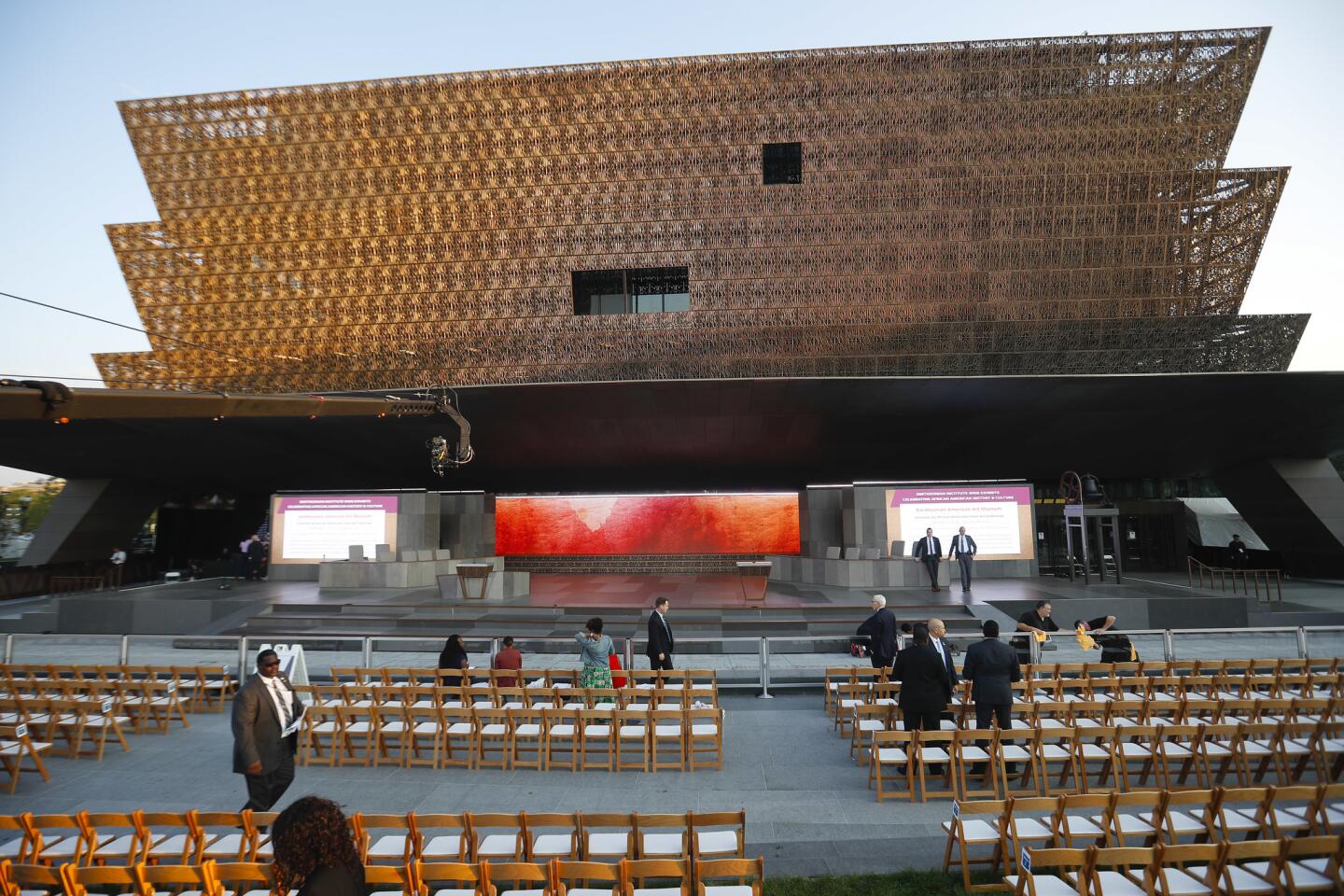Obama leads opening of Smithsonian’s new African American museum
- Share via
Reporting from washington — America’s first national museum dedicated to African American history and culture opened Saturday with emotional but joyful words from the country’s first black president, who said he hoped the stories contained inside will help everyone “walk away that much more in love” for their country.
In an impassioned speech, President Obama pointed out the highs and lows of being black in America, from slavery and Jim Crow segregation to voting rights and economic leaders. That duality lingers still, Obama said, through successes such as his presidency, and trials such as the police killings of black men.
“We are not a burden on America. Or a stain on America ... we are America. And that’s what this museum explains,” Obama said.
He and First Lady Michelle Obama joined Ruth Bonner, a 99-year-old direct descendant of a slave, and her family as they rang a bell from the historic First Baptist Church of Williamsburg, Va., to signal that the National Museum of African American History and Culture was officially open.
The church, believed to be among the first Baptist churches organized entirely by black people, acquired its Freedom Bell in 1886. It will return to the church for its 240th anniversary later this year.
Civil rights veteran John Lewis, a Democratic congressman from Georgia who co-sponsored the bill that created the museum, said he hopes visitors will come away with a healthy respect for human dignity, “and a stronger commitment to the idea of justice, truth and democracy.”
“This place is more than a building, it is a dream come true,” Lewis said.
In his speech, Obama imagined himself coming back to the museum someday as a private citizen, “holding a little hand of somebody and telling them the stories enshrined here.”
A shining bronze-colored beacon on the National Mall, only steps away from the White House and the Washington Monument, the new Smithsonian facility chronicles the complex relationship between the United States and a people it once enslaved, and tells the story of those who worked to make the necessary changes to bring the country to where it is today.
Thousands gathered on the National Mall to watch the museum officially open its doors and to be among the first inside — if they were lucky enough to get the much-coveted opening-day tickets.
“It’s like walking across the desert and finally getting to a fountain of water to quench your thirst. It’s absolutely breathtaking for me,” said Verna Eggleston, 61, of New York City, who will tour the museum later Saturday.
After a decades-long push, ground was broken for the new museum in 2012 on a five-acre tract near the Washington Monument. Lewis worked with then-Sen. Sam Brownback of Kansas, now the state’s Republican governor, to usher legislation through Congress. President George W. Bush signed it into law in 2003.
Bush said the museum tells the unvarnished truth, that a country founded on the promise of liberty once held millions of people in chains. A great nation does not hide from its history, Bush said, “it faces its flaws and corrects them.”
Construction was completed earlier this year on the 400,000-square-foot museum designed by British Ghanaian architect David Adjaye. The museum strikes a unique shape on the Mall with its three-tiered bronze exterior panels inspired by an African wooden column. The patterned bronze-colored tiles are inspired by 19th century ironwork created by slaves in the South, and allow sunlight into the museum through its patterns.
The new museum “symbolizes all of the contributions, the culture and the crisis of black America,” said Rev. Howard-John Wesley, pastor of Alfred Street Baptist Church in Alexandria, Va., whose members donated $1 million to the museum. “It’s a beautiful thing, especially in this day and time when we’re fighting to remind ourselves how important black lives are.”
Inside, museum officials say they have nearly 3,000 items occupying 85,000 square feet of display space, including exhibits such as a Tuskegee Airmen training plane and the casket of Emmett Till, a murdered African American boy whose murder helped rally the civil rights movement.
“It’s been 100 years in the making. So many people have dreamed about this, fought for this and wanted this to happen,” said U.S. Circuit Judge Robert L. Wilkins, who wrote the book “Long Road to Hard Truth” about the struggle to open the museum. “It’s going to be a testament to their work and a testament to so many of our ancestors that this museum will open on the Mall.”
Millions of donors, both known and unknown, contributed to the $315 million in private funding raised before the museum’s opening. Some of the biggest donors’ names adorn the walls inside, including the Oprah Winfrey Theater; the Michael Jordan Hall: Game Changers; and the newest named addition, Robert F. Smith Explore Your Family History Center. It is named after the CEO of investment firm Vista Equity Partners after a $20-million gift announced Monday.
As part of the opening ceremony, Winfrey and actor Will Smith read lines of famous black writers, from Maya Angelou to Langston Hughes, Toni Morrison and Martin Luther King Jr.
“I am overwhelmed. I’m humbled,” said Deborah Elam, president of the GE Foundation and chief diversity officer of General Electric, as she waited for the museum’s opening. GE donated $5 million toward the construction of the museum. “I’m so proud our company contributed early because we believed in this project.”
Some people trying to get to the dedication ceremony stood for more than an hour in lines that snaked around the Mall to get through security.
Master Sgt. Donald Sparks of Houston, who just finished a yearlong deployment in Iraq, said he was eager to see the exhibits inside the museum. “I’m just elated and can’t express how much joy and gratitude I have to be here today and witness history,” he said.
ALSO
Obama vetoes bill paving way for 9/11 families to sue Saudi Arabia, setting up a possible override
Demonstrators flood streets again in Charlotte and Atlanta to protest police shootings
Death toll rises to 5 in shooting at Burlington, Wash., mall; gunman still at large
UPDATES:
12:10 p.m.: This article was updated with additional details throughout.
This article was originally published at 8:40 a.m.
More to Read
Sign up for Essential California
The most important California stories and recommendations in your inbox every morning.
You may occasionally receive promotional content from the Los Angeles Times.
